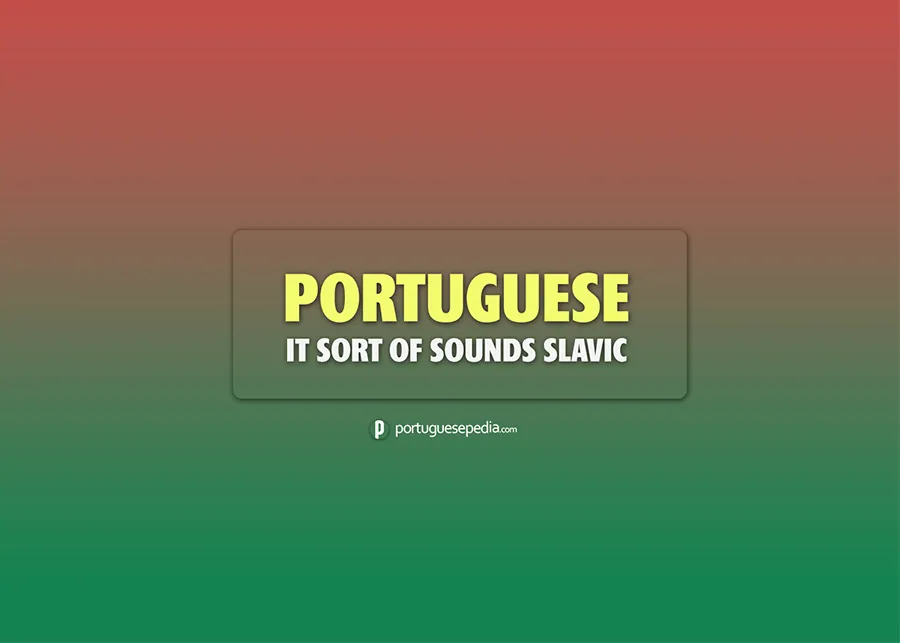
This Is Why Portuguese Sounds Slavic
Being a Romance language, why does Portuguese – in specific European Portuguese – sound so Slavic?!
Despite being geographically distant and belonging to different language families, Portuguese seems to share certain phonological features with Slavic languages, which leads to the question: what are those features exactly?
In this blog post, I will point out four phonological traits of European Portuguese that help explain its resemblance to Slavic languages. Read on.
Closed vowel sounds
Like several Slavic languages, closed vowel sounds are a prominent feature of European Portuguese.
Being a stressed-time language (as opposed to syllable-timed like other Romance languages), Portuguese produces fairly consistent time gaps between stressed syllables.
That, in turn, implies vowel reduction in unstressed syllables so they can fit into those relatively fixed time slots between stressed ones.
Vowel reduction?
It’s more simple than it sounds. Vowel reduction means that vowels become hastily pronounced, thus leading to closed vowel sounds (to allow unstressed syllables to fit into those fixed time slots mentioned above).
Like Portuguese, Slavic languages are dominantly stressed-timed and, therefore, have a high frequency of damped, closed vowel sounds.
Nasal sounds
Portuguese and Slavic languages share a rich vowel system that includes nasalized vowels (note that nasal vowels are uncommon in other Romance languages).
This nasalization gives the Portuguese language a distinctive, resonant quality setting it apart from other Romance languages. Accordingly, such nasal quality adds to the resemblance between Portuguese and Slavic languages.
Fricative sounds
European Portuguese is rich in fricative sounds, namely the /ʃ/ and /ʒ/ sounds, as in shade or measure respectively.
(Fricative sounds are produced when the airflow passing through one’s vocal tract is constrained by a narrow passage. For the examples above, that narrow canal is formed by your tongue being pushed up against your hard palate.)
What’s more, these sounds are also a hallmark of Slavic languages. Thus, one more reason why Portuguese resembles the latter.
The dark L
Finally, the so-called dark L is salient in Portuguese and Slavic languages.
You must be wondering what the dark L sounds like, right?
Well, the dark L is thicker than the “normal” L-sound. For instance, compare the L-sounds in the words Lisbon and malware. Can you hear the difference? That’s exactly right: Lisbon has the “normal” one, whereas malware renders a fatter, darker sound – the dark L.
Conclusion
In sum, the similarity between Portuguese and Slavic languages can be attributed to a few shared phonological features. In this short post, I briefly touched on four of them, that is, the noticeable presence of closed vowel sounds, nasal sounds, fricative sounds, and the dark L.
If you want to dive deeper into this topic, I highly recommend this article.

Olá! I'm Pedro and I'm your Portuguese teacher.
Ready to unlock the beauty of European Portuguese? Portuguesepedia is your key! This all-in-one platform provides a wealth of learning resources, from bite-sized video lessons to immersive idiomatic dips. Perfect your pronunciation and aural comprehension with listening drills and solidify your grammar with in-depth articles. Start your Portuguese journey today!
Share this article
Get my guide "Key Strategies to Learn Portuguese" for FREE.
